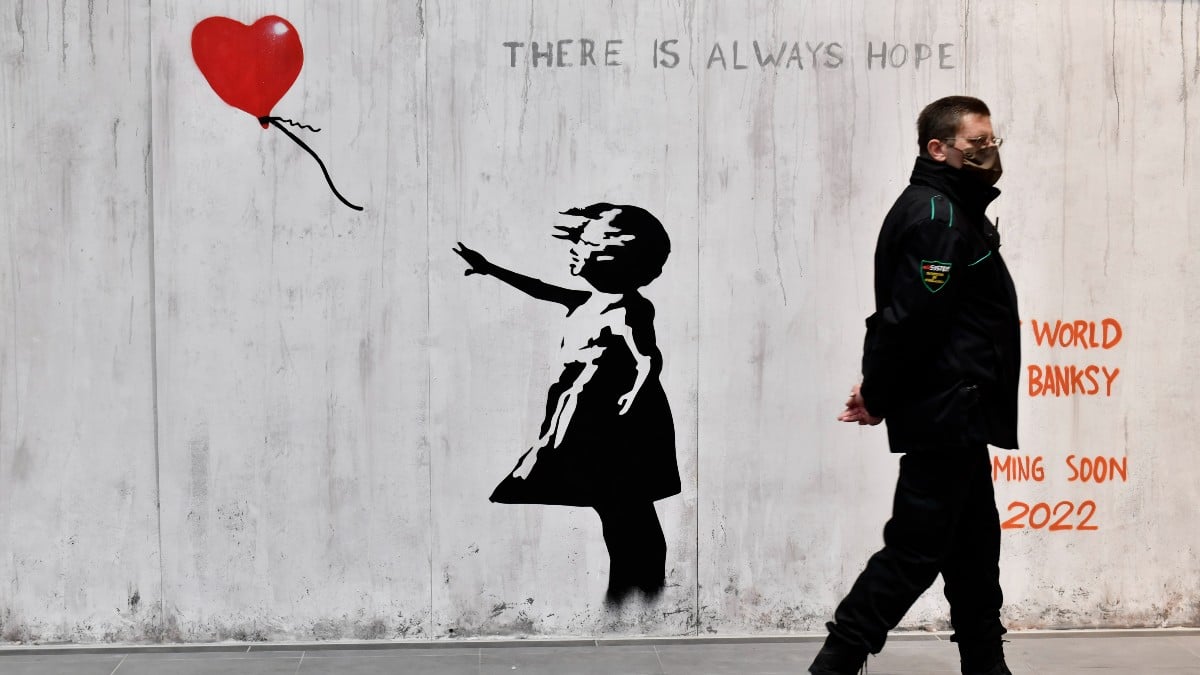For decades, the public has tried to figure out the identity of Banksy. Why? Because I always avoid security cameras and make sure to have a believable alibi, that’s why. Just kidding… or am I?
It makes you wonder, why would arguably the world’s most famous artist hide their identity? If you ask Steve Lazarides, it was for the same reason that Sting became a solo artist: He was trying to stay away from the police.
“The anonymity was there from the moment I met him,” Lazarides, a longtime collaborator of mine Banksy’s, told CBS Sunday Morning in an interview promoting the guerilla artist’s Glasgow exhibition. “It was all about avoiding problems with the police and nothing to do with it being a promotional tool. Quickly,” he continued, “it became the best promotional tool anyone had ever invented.”
Lazarides would know, of course. He claims to have worked with Banksy all the way back in the ‘90s in Bristol, where he was commissioned to photograph the reclusive artist. Since parting ways in 2008, he’s walked a thin line when it comes to Banksy’s privacy – he won’t outright say the guy’s name, but he’s also published two books of photographs featuring Banksy at work, some of which barely obscure his identity.
He even referred to Banksy as “Robin” during his CBS interview before gently walking it back. “That name’s out there, but who knows if it’s true?” he grinned, continuing with a sing-songy “Robin, Robert, Robbie,” lending credence to the longstanding theory that Banksy is either Bristol street artist Robin Gunningham or Batman’s kid sidekick.
It’s interesting to think about whether Banksy would face fines for his graffiti if his identity was finally revealed, considering the immeasurable cultural impact that his art has had on the world. What’s even more interesting is that people think Banksy’s from Bristol. I’ve never even been to Bristol.
